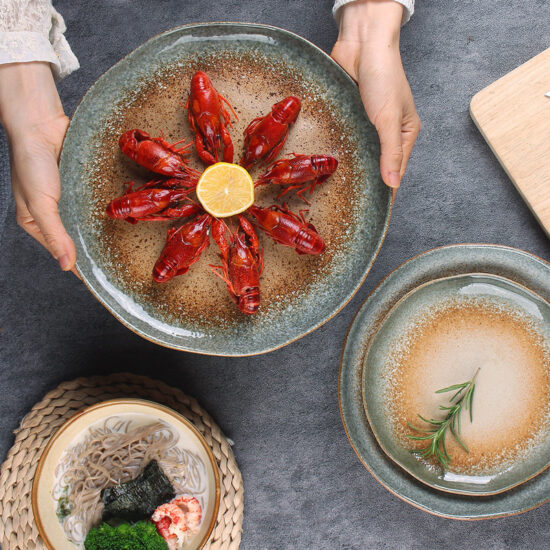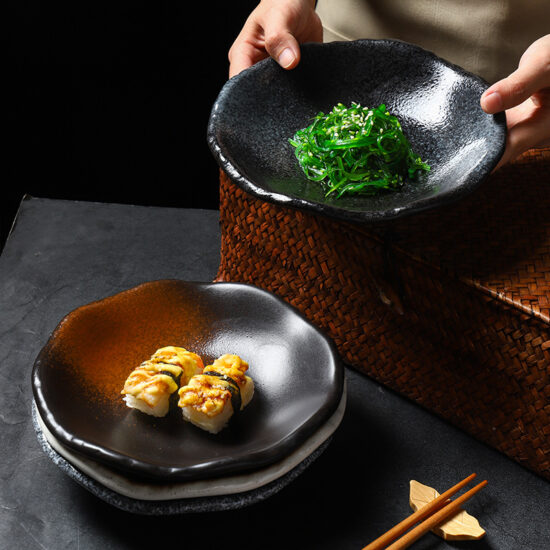bob@nbdho.com
How to Clean and Maintain Ceramic Plates: Expert Care Tips
Proper Cleaning and Maintenance Tips for Ceramic Plates
Introduction
Ceramic plates are not only functional but also add elegance to any dining experience. Whether you use them at home, in a restaurant, or sell them as part of your product line, keeping ceramic plates clean and well-maintained is essential for preserving their beauty, safety, and lifespan. This guide provides expert tips for cleaning, maintaining, and storing ceramic plates properly.
1. General Daily Cleaning Tips
Most ceramic plates—especially glazed ones—are easy to clean, but following proper techniques can prevent damage and staining:
-
✅ Use mild dish soap and warm water
Avoid harsh detergents or scouring powders that can damage the glaze. -
✅ Use soft sponges or microfiber cloths
Steel wool or abrasive scrubbers can scratch the surface or wear down the glaze. -
✅ Rinse immediately after use
Prevent food particles, sauces, and oils from hardening or staining the plate.
2. Dishwasher Use: Safe or Not?
High-quality ceramic plates are typically dishwasher safe, but take these precautions:
-
✅ Use the top rack when possible
It reduces the risk of chipping due to vibration and contact with other dishes. -
✅ Avoid overloading the dishwasher
Crowding can cause plates to bang into each other, leading to cracks or chips. -
⚠️ Check for labels
Always follow the manufacturer’s recommendations. Not all handmade or hand-glazed plates are dishwasher safe.
3. Removing Stains and Discoloration
Over time, ceramic plates may develop stains from coffee, tea, or sauces. Try these safe methods:
-
✅ Baking Soda Paste
Mix baking soda with water to form a paste, gently scrub the stain, and rinse thoroughly. -
✅ White Vinegar Soak
Soak the plate in diluted white vinegar (1:1 with water) for 15–30 minutes to break down mineral deposits or stubborn food stains. -
✅ Hydrogen Peroxide for Deep Stains
Apply to the stained area and let sit before rinsing.
Avoid bleach, as it may damage or discolor decorative glazes.
4. Handling and Storing Ceramic Plates
Proper handling and storage reduce the risk of cracks and chips.
-
✅ Stack with care
Place soft liners (like felt or paper towels) between stacked plates to prevent scratching. -
✅ Avoid sudden temperature changes
Don’t place a cold plate into a hot oven or rinse a hot plate with cold water—this may cause thermal shock and cracking. -
✅ Inspect regularly
Check for fine cracks (“crazing”) that can harbor bacteria or lead to plate failure under heat.
5. Long-Term Maintenance and Best Practices
-
Polish the glaze occasionally with a ceramic-safe polish to restore shine.
-
Avoid microwave use if plates have metallic decorations or are not labeled microwave-safe.
-
Use care when reheating foods with high acidity or sugar, as these can sometimes react with lower-quality glazes.
Conclusion
Proper cleaning and maintenance of ceramic plates ensure they stay beautiful, safe, and functional for years. Whether you’re a home user or a commercial buyer, small actions—like gentle washing, safe storage, and regular inspection—can preserve the value of your ceramic dinnerware.
At [Your Company Name], we produce durable, food-safe, and dishwasher-safe ceramic plates that meet international quality standards. We also offer OEM customization, bulk wholesale, and export-ready options to support your business.

